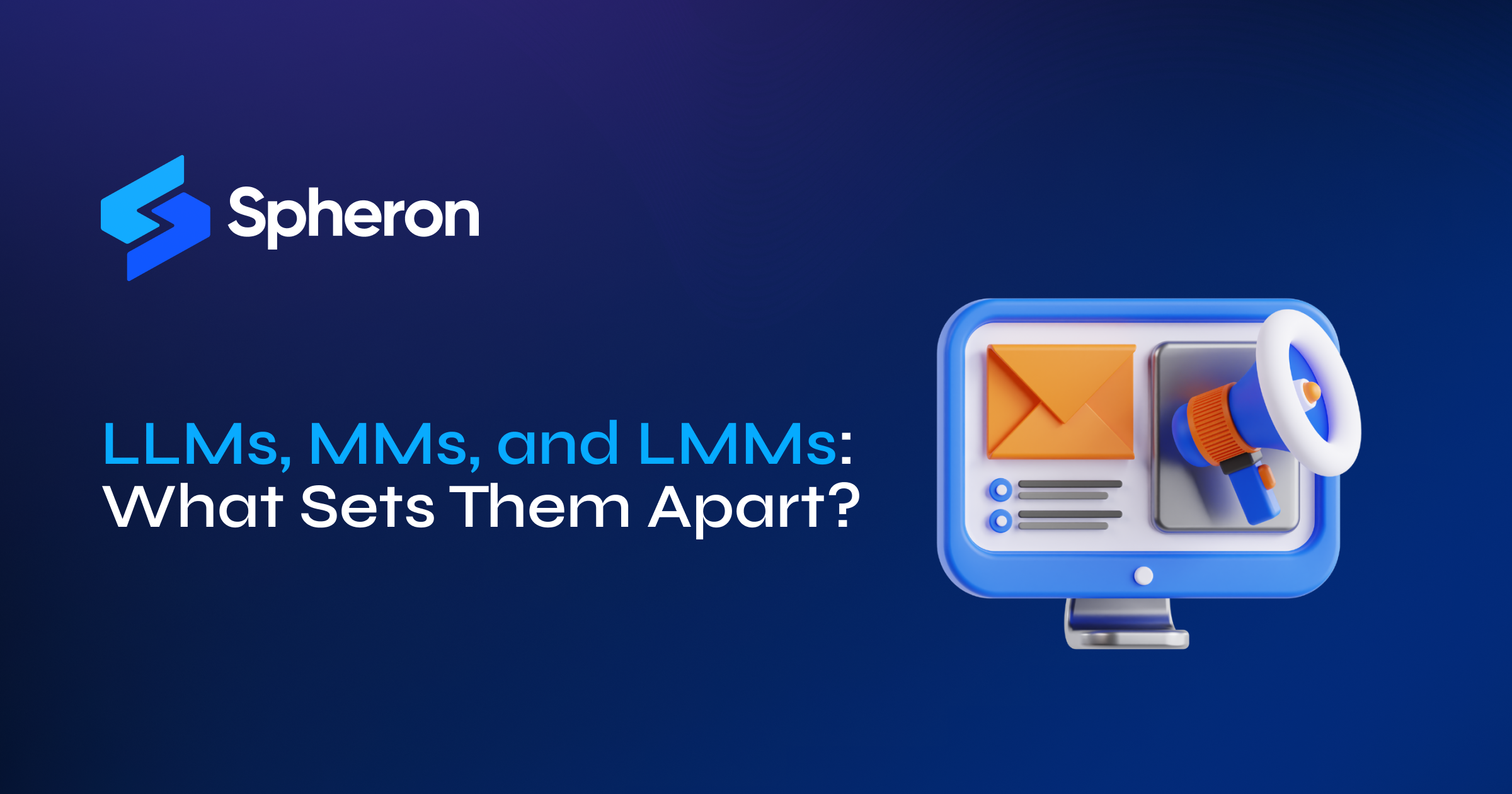LLMs, MMs, and LMMs: What Sets Them Apart?
 Spheron Network
Spheron NetworkTable of contents

Language Learning Models (LLMs) are machine learning models specifically designed for processing and understanding natural language text. These models can perform various tasks, such as sentiment analysis, text classification, named entity recognition, part-of-speech tagging, and machine translation. Examples of LLMs include recurrent neural networks (RNNs), long short-term memory networks (LSTMs), gated recurrent units (GRUs), and transformers.
Multimodal Models (MMs) are machine learning models that can process data from multiple modes or sources, such as images, audio, video, and text. MMs are helpful in applications where data is available in multiple forms, such as social media posts with text and image content or videos with speech and visual information. By integrating information from multiple modalities, these models can often perform better than those trained on a single modality alone.
Large Multimodal Models (LMMs) are multimodal models that use very large neural network architectures and extensive training datasets to learn representations across multiple modes. LMMs typically incorporate transfer learning, self-supervised pretraining, and attention mechanisms to effectively integrate information from different modalities. Some examples of LMMs include CLIP, which uses contrastive learning to align text embeddings with corresponding image embeddings, and Flamingo, which incorporates a large vision model and a large language model into a unified architecture for multimodal understanding.
Here's a comparison chart for Language Learning Models (LLMs), Multimodal Models (MMs), and Large Multimodal Models (LMMs):
| Feature/Aspect | LLMs | MMs | LMMs |
| Definition | Models designed for language understanding and generation. | Models that can process and understand multiple types of data (e.g., text, images, audio). | Advanced models that can handle large-scale, diverse multimodal data. |
| Data Types | Primarily text. | Text, images, audio, video, etc. | Large-scale text, images, audio, video, etc. |
| Applications | Text generation, translation, summarization, sentiment analysis. | Image captioning, speech recognition, video analysis, cross-modal retrieval. | Advanced applications like autonomous driving, complex scene understanding, and interactive AI. |
| Examples | GPT-4, BERT, T5 | CLIP, DALL-E, VGG | Flamingo, Gato by DeepMind |
| Training Data | Large text corpora. | Combined datasets from multiple domains. | Extensive and diverse datasets from multiple modalities. |
| Architecture | Transformer-based, RNN, LSTM. | Fusion of architectures for different data types (e.g., CNN for images, RNN for text). | Highly integrated architectures combining multiple neural network types. |
| Complexity | High | Higher than LLMs | Highest among the three |
| Compute Requirements | Significant | Higher due to multimodal processing | Very high due to the need for processing and integrating large-scale multimodal data. |
| Advantages | Strong language capabilities and extensive text understanding. | Versatility in handling various data types and cross-modal capabilities. | Unmatched in understanding and processing large-scale multimodal data, leading to advanced AI capabilities. |
| Challenges | Limited to text, context understanding. | Integration of different data types, scalability. | Extremely high computational cost, complexity in training and fine-tuning, and data integration. |
Conclusion
In summary, while LLMs focus solely on natural language processing tasks, MMs can handle inputs from multiple modes. LMMs are a specific type of MM that leverages large neural network architectures and extensive training datasets to integrate information from multiple modes effectively.
As the demand for GPU resources continues to surge, especially for AI and machine learning applications, ensuring the security and ease of access to these resources has become paramount.
Spheron’s decentralized architecture aims to democratize access to the world’s untapped GPU resources and strongly emphasizes security and user convenience. Let’s unpack how Spheron protects your GPU resources and data and ensures that the future of decentralized compute is both efficient and secure.
Interested in learning more about Spheron’s network capabilities and user benefits?Review the whitepaper in full.
Subscribe to my newsletter
Read articles from Spheron Network directly inside your inbox. Subscribe to the newsletter, and don't miss out.
Written by

Spheron Network
Spheron Network
On-demand DePIN for GPU Compute